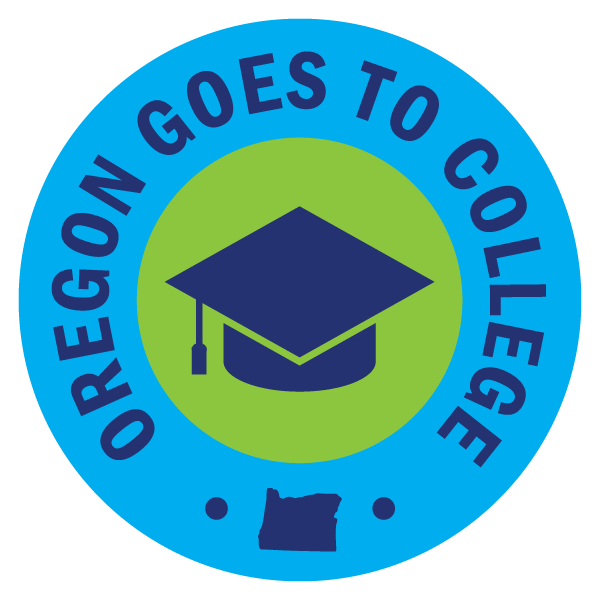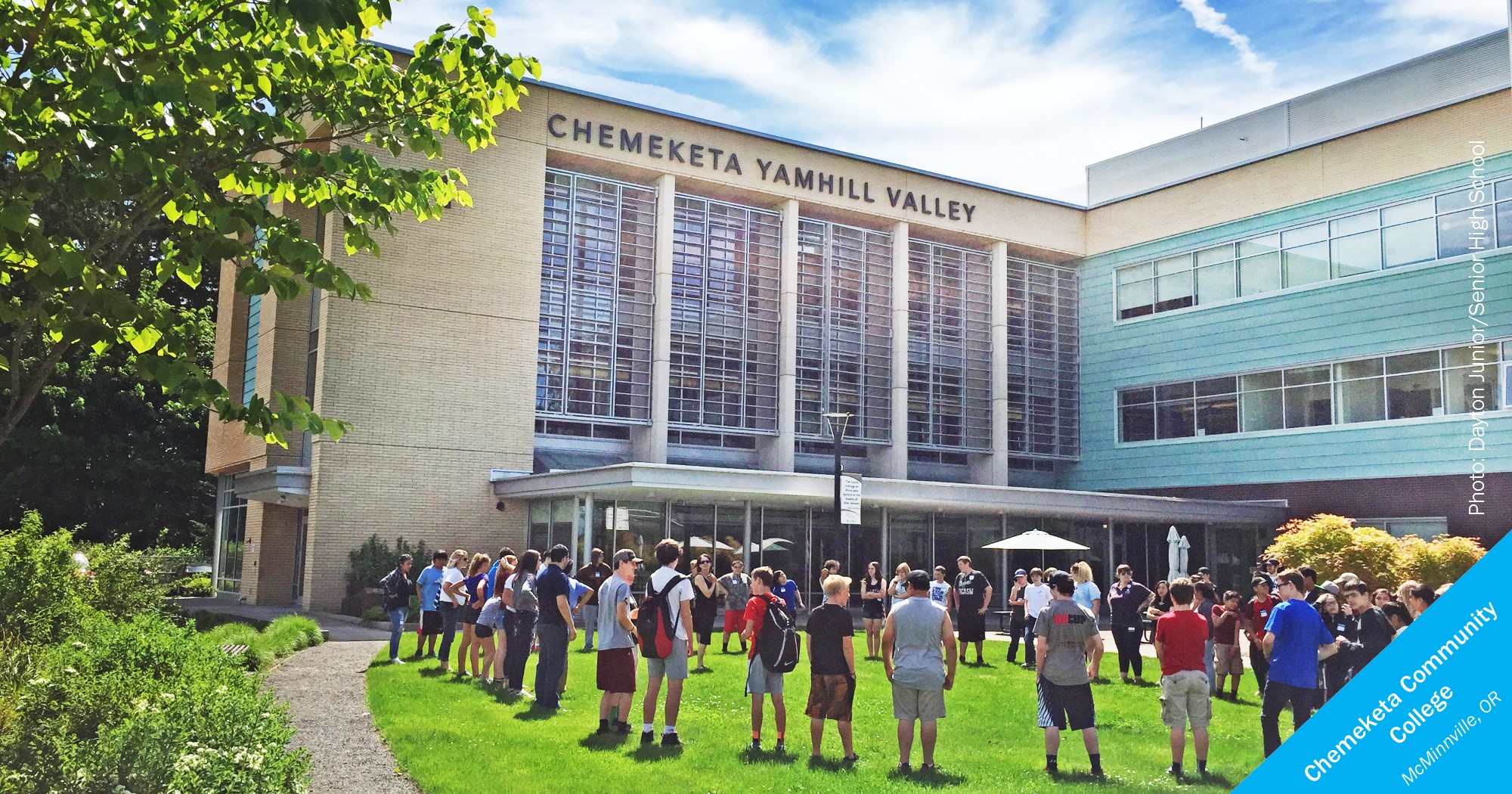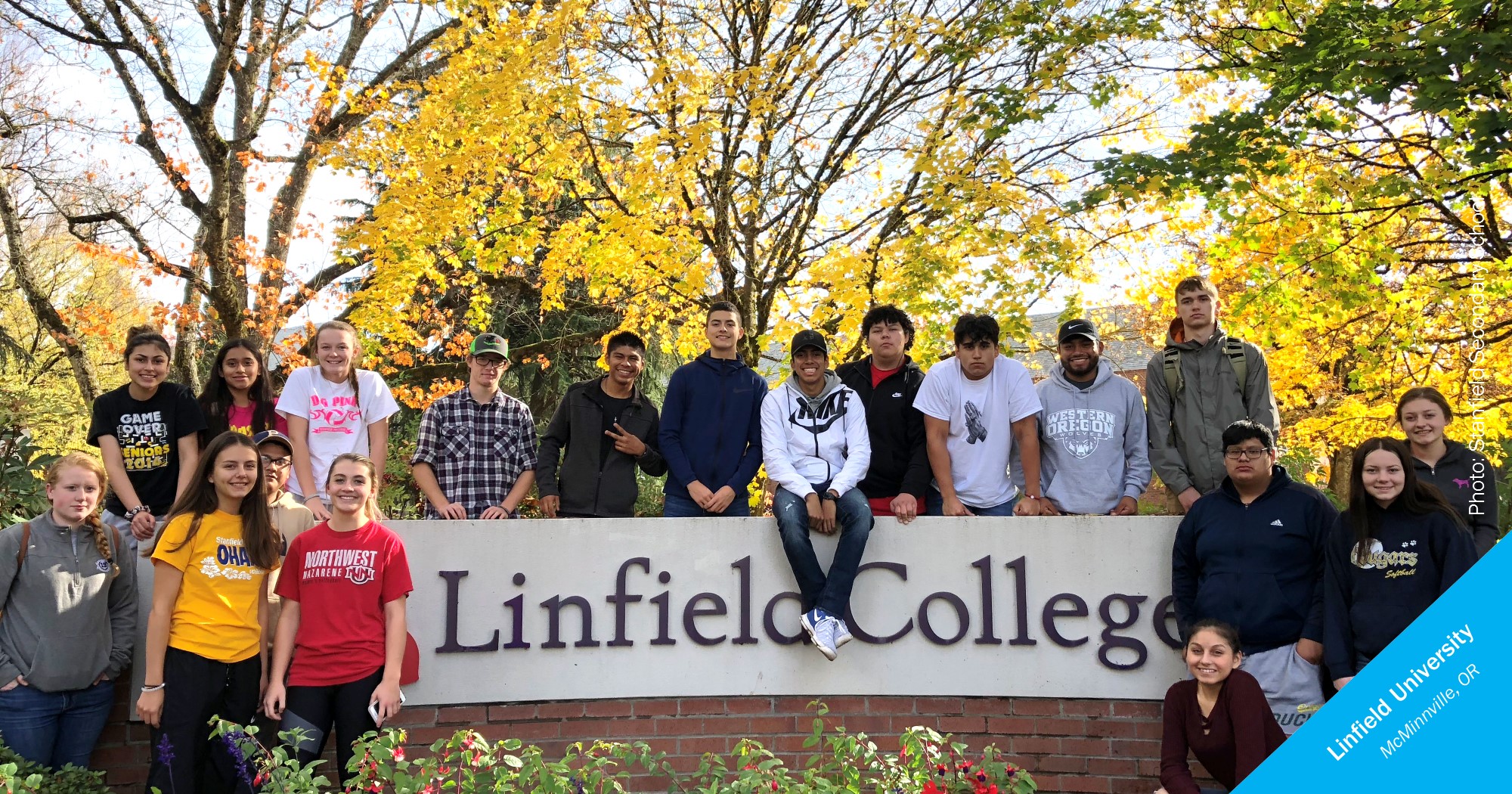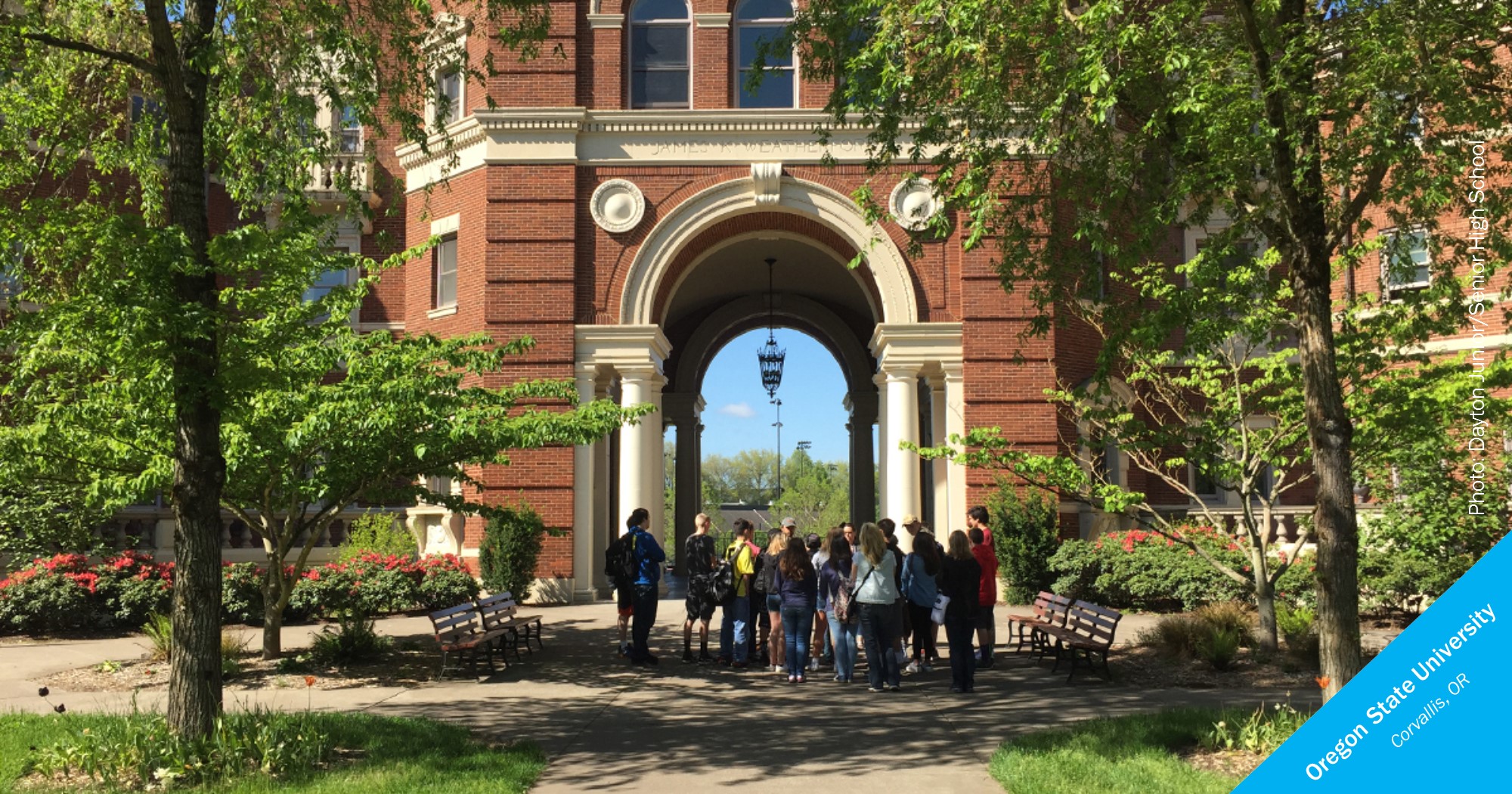
For colleges: learn strategies and resources to engage younger students on campus visits.
Discover high-impact, yet low-effort strategies and resources to involve younger students in your college’s campus visit program.
K-12 educators: use our College Visits Toolkit to learn how to plan an intentional and successful visit.
Table of contents
- Why campus visits for younger students matter
- What younger students need to know
- Program format and activities
- Strategies and suggestions
★ = Oregon Goes To College resource
Why campus visits for younger students matter
Planning and executing programs for younger students can seem daunting and out of the scope of most college staff responsible for campus visit programs. However, as you may have already experienced, increasing numbers of groups are requesting campus visits for younger students. This is in part due to state and federal grant dollars that are tied to increasing college awareness at an early age.
Early exposure matters
In order to encourage student aspirations for postsecondary education, it’s vital for students to be able to see themselves as college students. College campus visits are one way of encouraging this college-going identity. Research shows the importance of starting college and career planning and awareness in middle school (or earlier!)
On-campus experiences have been shown to increase both college aspirations and knowledge. Even one day visits have the power to inspire both students and parents and inform them of the possibilities. In fact, students whose parents accompany them on campus visits have increased odds of attending college.
Campus visits can also help reinforce key concepts about the application and financial aid process and provide an opportunity to build relationships with college students and staff.
“The biggest thing [for our students] is exposure about what college looks like and what it takes to go to college. College visits make kids feel connected to that and to see it as a possibility. We talk about college in weekly sessions but getting on campus makes a huge difference." Principal
The impact on future enrollment
Increasing college access for low-income, first-generation college-bound, and other underrepresented groups is an integral element to increase college enrollment and diversity on campus. In addition, there is greater attention being paid to college selection and fit, specifically to combat “undermatching”: when academically talented students fail to even apply for more selective colleges.
Therefore, although outreach to younger students might not be part of your college or department’s mission, it is valuable to consider some way to support students at this critical age. Additionally, one benefit to offering visit opportunities for younger students is that when they return as juniors as seniors, the students will be better prepared to participate in traditional campus visit programs.
What younger students need to know
The information that a middle school or early high school student needs about college is very different than that of a junior or senior in high school. The messages that are conveyed during the visit should be developmentally appropriate and use common language that students will understand (watch out for acronyms!)
The early adolescent years are characterized by a preoccupation with identity and image, therefore college preparation curricula usually begins with self-exploration (Who am I? Who do I want to be?) and then moves on to planning (How do I get there?).
Different groups will have varying levels of college knowledge prior to the visit, but in general, younger students are not concerned about specific details like a college’s faculty-to-student ratio or application deadlines. Instead, they are most interested in whether college is for them and if they can see themselves as a college student. Therefore, re-frame the campus visit as an opportunity to share key messages about college accessibility and preparation.
Key messages for younger students
- There are many different types of colleges.
- College is for people like you.
- College is relevant to your career interests.
- College is attainable (academically and financially).
- College is fun and an opportunity to learn and try new things and meet new people.
- You can start preparing for college now.
Program format and activities
A robust campus visit program should ideally include at least two activities – one each from two of the three categories. Brainstorm new variations to make it your own—use our Visits for Younger Students Planning Guide ★ to outline a tiered visit program appropriate for 7th - 10th grades.
Info session
- Game show: Use Jeopardy, Wheel of Fortune, Who Wants to Be A Millionaire? or any other game show to turn the info session into a competition.
- Party games: Play 20 Questions, Charades, or BINGO using majors or other college terms.
- Student panel: Find college students from similar backgrounds to share their experiences and answer questions.
- A day in the life: Ask students to describe their expectations and fears of college life. Have college students share photos or videos of a typical day.
- Engage parents: Provide resources specifically for parents.
Campus tour
- Self-guided: Provide chaperones with maps and information about buildings, landmarks and services for small group tours. Designate with a symbol or add a QR code to link to videos or websites with more information.
- Photo tour: Create a self-guided tour where students take group photos in front of key landmarks. Provide hashtags they can use on social media so you can share! Use our Photo Scavenger Hunt ★ as a starting point.
- Scavenger hunt: Students must follow clues to answer questions to learn more about the campus. Example: Oregon State University's Get to Know OSU Quest
- Topical tours: Colleges often already have art walks or history tours developed. Or, create your own, like a tour that includes locations with images of the college mascot.
Extras
- Athletics: Arrange for groups to walk through athletic facilities or meet with a student-athlete.
- Hands-on activities: Connect with professors or student clubs that are willing to lead an activity in a classroom, studio or lab. Example: Reed College's Research Reactor Tour & Lab
- Dining halls: Arrange for students to eat in a dining hall, either with meal cards or their own sack lunches.
- Cultural or athletic events: Encourage groups to attend when there are free events on campus that might connect with what they are studying in class.
- Get outside: Provide Frisbees and a grassy spot for students to soak up the college life or have a picnic.
- Whatever’s unique: Show off the cool thing on your campus!
Strategies and suggestions
Planning visits for younger students
- Stick with what works. Your current visit program likely includes an information session, a campus tour, and possibly another activity that gives prospective students an opportunity to experience life on your campus. It’s a tried and true formula, and it will work with younger students, too – with a few tweaks! The activity examples above will help you build a program that caters to younger students.
- Look for partnerships. Connect with other departments on campus to help with information sessions or extra activities. Consider the Financial Aid office, Admissions, Student Services, Student Government, Athletics, or student clubs. You know your campus best—there are probably others!
Ways to engage students
- Make it hands on. Shorter attention spans are better served with participatory activities.
- Ask open-ended questions. Encourage students to respond to questions to make it more conversational and engaging.
- Use near-peers to build relationships. Utilize college students whenever possible.
- Make it fun. Build college knowledge with a game show-style format or turn your campus tour into a scavenger hunt.
- Connect to interests and careers. Ask about their current hobbies and future goals and connect to majors, extracurriculars, etc.
- Relate to their school experience. Explain how college is similar to and different from middle school and high school. For example, college students set their own schedule, so they might not have class every day.
- Don’t get discouraged. Middle school students especially can be a tough crowd. Have a sense of humor with the group and have fun!
Logistics best practices
- Communicate program availability. Provide specific details on your website about group size limits, available dates and times, and how far in advance to book visits. It’s ok to limit these visits to specific times of year.
- Clarify student & chaperone expectations. Set a student-to-chaperone ratio that you are comfortable with (many programs opt for 10:1) and send specific expectations to be reviewed.
- Provide liability waivers and photo releases. Check with your Risk Management office whether students need to sign liability waivers before their visits. Photo releases may also be needed with guardian signatures for students under 18.
- Separate genders. You may be able to reduce behavior problems by placing boys and girls into separate groups.
- No need to give out expensive information packets. If you do have a budget for promotional materials, consider something small for each student like a pencil or poster.



